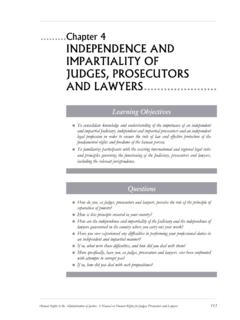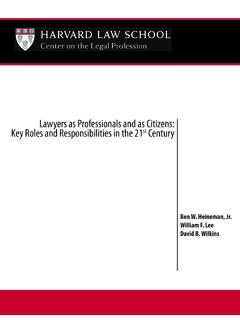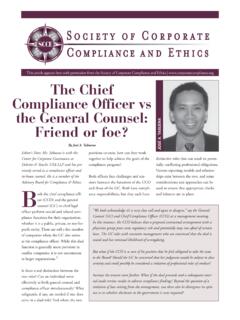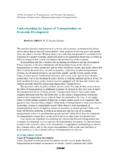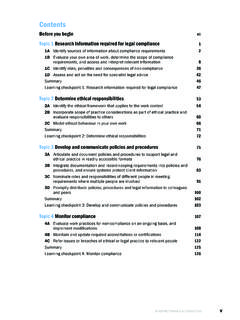Transcription of CODE OF PROFESSIONAL CONDUCT
1 { }*Code of PROFESSIONAL CONDUCT renumbered September 16, 2016 CODE OF PROFESSIONAL CONDUCT The Law Society of Saskatchewan Adopted by the Benchers of the Law Society of Saskatchewan on February 10, 2012 to be effective on July 1, 2012* { } page 2 Contents FOREWORD .. 7 PREFACE .. 8 CHAPTER 1 INTERPRETATION AND DEFINITIONS .. 10 CHAPTER 2 STANDARDS OF THE LEGAL PROFESSION .. 13 INTEGRITY .. 14 CHAPTER 3 RELATIONSHIP TO CLIENTS .. 16 COMPETENCE .. 17 Definitions .. 17 Competence .. 18 QUALITY OF SERVICE .. 22 Quality of Service .. 22 Limited Scope Retainers .. 24 Honesty and Candour .. 24 Language Rights .. 25 When the Client is an Organization .. 26 Encouraging Compromise or Settlement.
2 26 Threatening Criminal or Regulatory Proceedings .. 26 Inducement for Withdrawal of Criminal or Regulatory Proceedings .. 27 Dishonesty, Fraud by Client or Others .. 28 Dishonesty, Fraud when Client an Organization .. 29 Clients with Diminished Capacity .. 31 CONFIDENTIALITY .. 34 Confidential Information .. 34 Use of Confidential Information .. 36 Mandatory Disclosure - Future Harm/Public Safety Exception .. 37 Permitted Disclosure .. 38 { } page 3 CONFLICTS .. 42 Duty to Avoid Conflicts of Interest .. 42 Consent .. 45 Short-term Summary Legal Services .. 48 Dispute .. 49 Concurrent Representation with Protection of Confidential Client Information .. 49 Joint Retainers .. 50 Acting Against Former Clients.
3 54 Acting for Borrower and Lender .. 55 Conflicts from Transfer Between Law Firms .. 57 Application of Rule .. 57 Law Firm Disqualification .. 58 Transferring Lawyer Disqualification .. 60 Lawyer Due Diligence for Non-lawyer Staff .. 61 Doing Business with a 62 Definitions .. 62 Transactions with Clients .. 63 Borrowing from Clients .. 64 Lending to Clients .. 65 Guarantees by a Lawyer .. 66 Payment for Legal Services .. 66 Gifts and Testamentary Instruments .. 67 Judicial Interim Release .. 68 PRESERVATION OF CLIENTS PROPERTY .. 69 Preservation of Clients Property .. 69 Notification of Receipt of Property .. 69 Identifying Clients Property .. 70 Accounting and Delivery .. 70 FEES AND DISBURSEMENTS .. 71 Reasonable Fees and Disbursements.
4 71 Contingent Fees and Contingent Fee Agreements .. 72 Statement of 73 { } page 4 Joint Retainer .. 73 Division of Fees and Referral Fees .. 73 Exception for Multi-discipline Practices and Interjurisdictional Law 75 Payment and Appropriation of Funds .. 75 Prepaid Legal Services Plan .. 76 WITHDRAWAL FROM REPRESENTATION .. 77 Withdrawal from Representation .. 77 Optional Withdrawal .. 77 Non-payment of Fees .. 78 Withdrawal from Criminal Proceedings .. 79 Obligatory Withdrawal .. 81 Leaving a Law Firm .. 81 Manner of Withdrawal .. 82 Duty of Successor Lawyer .. 83 CHAPTER 4 MARKETING OF LEGAL SERVICES .. 85 MAKING LEGAL SERVICES AVAILABLE .. 86 Making Legal Services Available .. 86 Restrictions .. 87 MARKETING.
5 88 Marketing of PROFESSIONAL Services .. 88 Advertising of Fees .. 89 ADVERTISING NATURE OF PRACTICE .. 90 CHAPTER 5- RELATIONSHIP TO THE ADMINISTRATION OF JUSTICE .. 91 THE LAWYER AS ADVOCATE .. 92 Advocacy .. 92 Incriminating Physical Evidence .. 96 Duty as Prosecutor .. 97 Disclosure of Error or Omission .. 98 Courtesy .. 98 Undertakings .. 98 { } page 5 Agreement on Guilty Plea .. 98 THE LAWYER AS WITNESS .. 100 Submission of Evidence .. 100 Appeals .. 100 COMMUNICATING WITH WITNESSES .. 101 CONDUCT During Witness Preparation and Testimony .. 101 RELATIONS WITH JURORS .. 104 Communications before Trial .. 104 Disclosure of Information .. 104 Communication During 105 THE LAWYER AND THE ADMINISTRATION OF JUSTICE.
6 106 Encouraging Respect for the Administration of Justice .. 106 Seeking Legislative or Administrative Changes .. 107 Security of Court Facilities .. 107 lawyers AND MEDIATORS .. 108 Role of Mediator .. 108 CHAPTER 6- RELATIONSHIP TO STUDENTS, EMPLOYEES, AND OTHERS .. 109 SUPERVISION .. 110 Direct Supervision Required .. 110 Application .. 112 Delegation .. 112 Suspended or Disbarred lawyers .. 114 Electronic Registration of Documents .. 114 STUDENTS .. 116 Recruitment and Engagement Procedures .. 116 Duties of Principal .. 116 Duties of Articling Student .. 116 { } page 6 HARASSMENT AND DISCRIMINATION .. 117 CHAPTER 7- RELATIONSHIP TO THE SOCIETY AND OTHER lawyers .. 118 responsibility TO THE SOCIETY AND THE PROFESSION GENERALLY.
7 119 Communications from the 119 Meeting Financial Obligations .. 119 Duty to Report .. 119 Encouraging Client to Report Dishonest CONDUCT .. 121 responsibility TO lawyers AND OTHERS .. 122 Courtesy and Good Faith .. 122 Communications .. 123 Inadvertent Communications .. 125 Undertakings and Trust Conditions .. 126 OUTSIDE INTERESTS AND THE PRACTICE OF LAW .. 129 Maintaining PROFESSIONAL Integrity and Judgment .. 129 THE LAWYER IN PUBLIC OFFICE .. 131 Standard of CONDUCT .. 131 PUBLIC APPEARANCES AND PUBLIC STATEMENTS .. 133 Communication with the Public .. 133 Interference with Right to Fair Trial or Hearing .. 134 PREVENTING UNAUTHORIZED PRACTICE .. 135 Preventing Unauthorized Practice .. 135 RETIRED JUDGES RETURNING TO PRACTICE.
8 136 ERRORS AND OMISSIONS .. 137 Informing Client of Errors or Omission .. 137 Notice of Claim .. 137 Co-operation .. 138 Responding to Client s Claim .. 138 { } page 7 FOREWORD Canadian Law Societies are committed to facilitating interprovincial mobility for lawyers through uniform national standards. The Law Society of Saskatchewan Code of PROFESSIONAL CONDUCT , 2012 was modeled on a draft developed by the Federation of Law Societies of Canada as a national code and replaces the Code that has guided lawyers in the province since 1991. The draft national Code was referred to as the Model Code. The first Model Code committee was chaired by the Law Society of Saskatchewan s Executive Director at the time, Allan Snell , and began its work in 2004.
9 That committee circulated a draft for review and feedback to all law societies in Canada in August of 2007. Law societies across Canada then made minor provincial variations in recognition of the fact that regional differences exist. The Benchers of the Law Society of Saskatchewan added Saskatchewan context to the Model Code and it was approved in February of 2012 with an effective date of July 1, 2012. The amendments focus largely on better overall organization of the rules, with improved best practice guidance in the commentaries to the rules and a view to creating a uniform ethical standard for all lawyers in Canada. The Law Society of Saskatchewan wishes to recognize and thank the many individuals who contributed to the development of the Model Code over the last eight years.
10 This includes the tireless efforts of staff from various Law Societies across Canada and the volunteer members of the five incarnations of the Model Code committee over the past eight years. It also includes past and present Law Society of Saskatchewan Benchers and staff that have undertaken a line-by-line comparison of the various drafts of the Model Code. { } page 8 PREFACE The Rule of Law is a cornerstone of the Constitution and Canadian society. lawyers are essential participants in a justice system that advances the Rule of Law. They represent the interests of their clients, are members of a profession and are officers of the Court. They enjoy a unique and privileged position in society.
